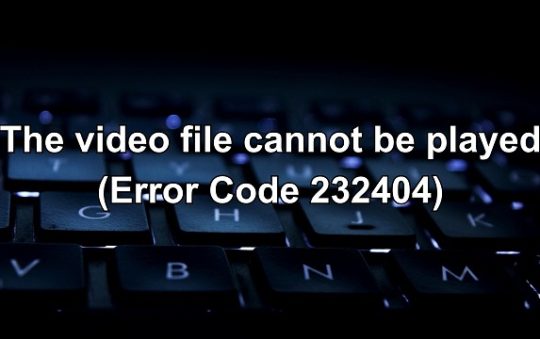Raspberry Pi Media Server Guide: Transforming Your Home Entertainment Experience
Are you tired of juggling multiple devices to access your favorite movies, TV shows, and music? Do you wish there was a way to centralize all your media files and enjoy them on your big screen without any hassle? Look no further than the Raspberry Pi, a versatile and affordable credit-card-sized computer that can be transformed into a powerful home media server!
In this comprehensive guide, I’ll walk you through the process of setting up your very own Raspberry Pi home media server. Whether you’re a tech enthusiast or a beginner, this step-by-step tutorial will help you unlock a world of entertainment possibilities right at your fingertips.
What is a Raspberry Pi?
Before we dive into the setup process, let’s take a moment to understand what exactly a Raspberry Pi is. Developed by the Raspberry Pi Foundation, the Raspberry Pi is a single-board computer that offers the functionality of a regular PC but in a compact and affordable package. It runs on various operating systems, including Linux-based distributions such as Raspberry Pi OS (formerly known as Raspbian).
One of the greatest strengths of the Raspberry Pi is its versatility. Whether you want to use it as a media server, a retro gaming console, a home automation hub, or even a desktop computer, the Raspberry Pi can handle it all. Its low power consumption and compact form factor make it an ideal choice for DIY projects like building your own media server.
Setting up the Hardware:
To begin your journey towards creating a powerful media server, you’ll need a few essential hardware components. Here’s a list of what you’ll need:
- Raspberry Pi (preferably a Raspberry Pi 4 Model B for improved performance)
- MicroSD Card (with at least 16GB storage capacity)
- Power Supply (compatible with your Raspberry Pi model)
- HDMI Cable
- Ethernet Cable (optional, but recommended for faster network connectivity)
- USB Keyboard and Mouse
- External Hard Drive or USB Flash Drive (for storing media files)
Once you have gathered all the necessary hardware, it’s time to set up your Raspberry Pi!
Step 1: Prepare the MicroSD Card
To get started, you’ll need to install an operating system on your Raspberry Pi. The most popular choice for media server setups is Raspberry Pi OS (formerly known as Raspbian). Here’s how you can do it:
- Download the latest version of Raspberry Pi OS from the official website.
- Insert the MicroSD card into your computer using an SD card adapter.
- Format the MicroSD card using the SD Card Formatter tool (available for free).
- Use a program like Etcher to write the Raspberry Pi OS image onto the MicroSD card.
Step 2: Connect the Raspberry Pi
Now that you have prepared the MicroSD card, it’s time to connect your Raspberry Pi to the necessary peripherals. Follow these steps:
- Insert the MicroSD card into the Raspberry Pi’s MicroSD card slot.
- Connect one end of the HDMI cable to your Raspberry Pi’s HDMI port and the other end to your TV or monitor.
- Plug in your USB keyboard and mouse into the Raspberry Pi’s USB ports.
- If you’re using an Ethernet cable for network connectivity, connect one end to your Raspberry Pi’s Ethernet port and the other end to your router. Otherwise, you can set up a wireless connection later.
Step 3: Power Up the Raspberry Pi
With everything connected, it’s time to power up your Raspberry Pi. Here’s what you need to do:
- Connect the power supply to your Raspberry Pi.
- Once powered on, your Raspberry Pi will boot up and display the Raspberry Pi OS desktop on your TV or monitor.
- Follow the on-screen instructions to complete the initial setup process, including language selection and Wi-Fi configuration (if applicable).
Congratulations! You have successfully set up the hardware for your Raspberry Pi home media server. Now, let’s move on to the software setup.
Installing and Configuring Media Server Software:
Now that your Raspberry Pi is up and running, it’s time to install the necessary software to turn it into a capable media server. There are several options available, but for the purpose of this guide, we’ll focus on Plex Media Server.
Step 1: Install Plex Media Server
- Open a web browser on your Raspberry Pi and visit the Plex website.
- Download the appropriate version of Plex Media Server for Raspberry Pi.
- Once downloaded, open the terminal on your Raspberry Pi and navigate to the directory where the Plex Media Server package is located.
- Install the package by running the command:
sudo dpkg -i plexmediaserver.deb. - Follow the on-screen instructions to complete the installation process.
Step 2: Configure Plex Media Server
Now that Plex Media Server is installed, it’s time to configure it to suit your needs. Here’s how you can do it:
- Open a web browser on your Raspberry Pi and enter the following address:
http://localhost:32400/web. - Follow the on-screen prompts to sign in or create a new Plex account.
- Once signed in, Plex will scan your media files and organize them into a library for easy access.
- Customize your media server settings, such as library names, artwork, and subtitles.
- If you have multiple devices, you can install the Plex app on them and sign in with the same account to enjoy your media library on any screen.
Accessing Your Media Server:
Now that your Raspberry Pi media server is up and running, it’s time to start enjoying your favorite movies, TV shows, and music. Here’s how you can access your media server from different devices:
1. Smart TV
If you have a smart TV that supports Plex, you’re in luck. Simply download and install the Plex app from your TV’s app store, sign in with your Plex account, and start streaming your media library.
2. Streaming Devices
Popular streaming devices like Roku, Amazon Fire TV, and Chromecast also offer Plex apps. Download the app from the respective app store, sign in, and enjoy your media on the big screen.
3. Mobile Devices
Install the Plex app on your smartphone or tablet (available for both iOS and Android), sign in with your account, and access your media library on the go. You can even download media files for offline viewing.
4. Web Browser
If you prefer to access your media server from a computer, simply open a web browser and enter the address: http://app.plex.tv. Sign in with your Plex account, and you’ll have instant access to your media library.
Additional Tips and Tricks:
Now that you have your Raspberry Pi media server up and running, here are a few additional tips and tricks to enhance your home entertainment experience:
1. Organize Your Media Library
Take advantage of Plex’s robust library management features to organize your media files. Create separate libraries for movies, TV shows, music, and photos to keep everything neatly organized.
2. Transcoding Settings
If you plan on streaming media to devices with different playback capabilities, adjust Plex’s transcoding settings to ensure smooth playback. This can be particularly useful for low-powered devices or slower internet connections.
3. Remote Access
Enable remote access in Plex settings to access your media server from outside your home network. This allows you to stream your media library while away from home, provided you have a stable internet connection.
4. Plex Pass
Consider subscribing to Plex Pass, a premium subscription that unlocks additional features like mobile syncing, parental controls, live TV, and more. It’s a great way to take your media server to the next level.
Conclusion:
By following this Raspberry Pi media server guide, you have now transformed your humble Raspberry Pi into a powerful home entertainment hub. Enjoy seamless access to your media library from various devices, customize your settings, and explore the plethora of features offered by Plex Media Server. Now, sit back, relax, and immerse yourself in a world of endless entertainment possibilities!. For more visit Techy Robo.



